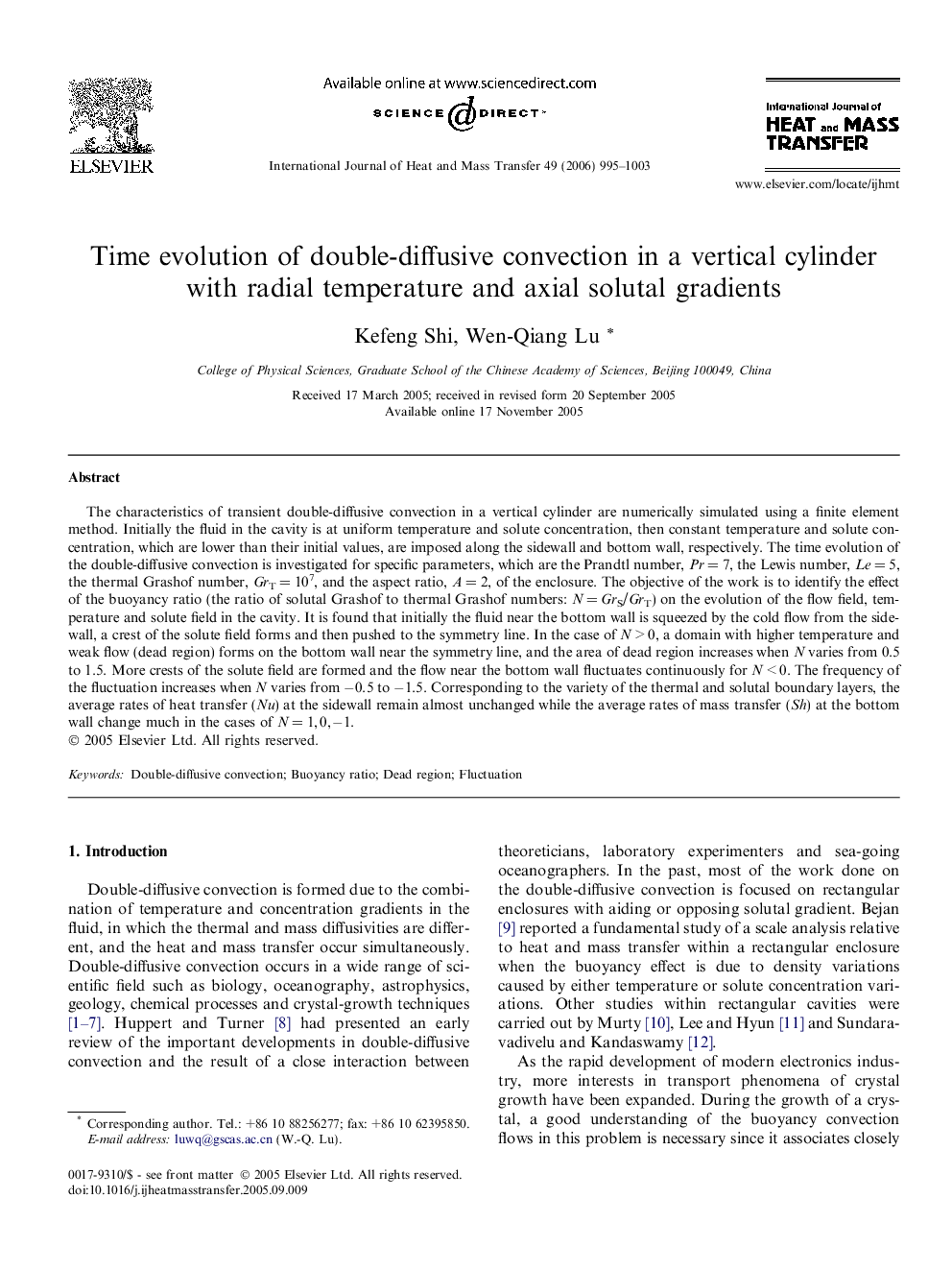| کد مقاله | کد نشریه | سال انتشار | مقاله انگلیسی | نسخه تمام متن |
|---|---|---|---|---|
| 661532 | 1458176 | 2006 | 9 صفحه PDF | دانلود رایگان |

The characteristics of transient double-diffusive convection in a vertical cylinder are numerically simulated using a finite element method. Initially the fluid in the cavity is at uniform temperature and solute concentration, then constant temperature and solute concentration, which are lower than their initial values, are imposed along the sidewall and bottom wall, respectively. The time evolution of the double-diffusive convection is investigated for specific parameters, which are the Prandtl number, Pr = 7, the Lewis number, Le = 5, the thermal Grashof number, GrT = 107, and the aspect ratio, A = 2, of the enclosure. The objective of the work is to identify the effect of the buoyancy ratio (the ratio of solutal Grashof to thermal Grashof numbers: N = GrS/GrT) on the evolution of the flow field, temperature and solute field in the cavity. It is found that initially the fluid near the bottom wall is squeezed by the cold flow from the sidewall, a crest of the solute field forms and then pushed to the symmetry line. In the case of N > 0, a domain with higher temperature and weak flow (dead region) forms on the bottom wall near the symmetry line, and the area of dead region increases when N varies from 0.5 to 1.5. More crests of the solute field are formed and the flow near the bottom wall fluctuates continuously for N < 0. The frequency of the fluctuation increases when N varies from −0.5 to −1.5. Corresponding to the variety of the thermal and solutal boundary layers, the average rates of heat transfer (Nu) at the sidewall remain almost unchanged while the average rates of mass transfer (Sh) at the bottom wall change much in the cases of N = 1, 0, −1.
Journal: International Journal of Heat and Mass Transfer - Volume 49, Issues 5–6, March 2006, Pages 995–1003